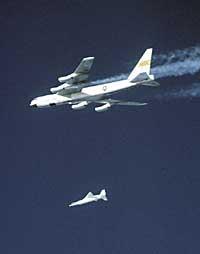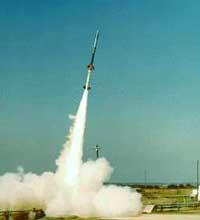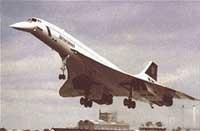The fastest plane, stopped
2001/08/05 Kortabarria Olabarria, Beñardo - Elhuyar Zientzia
In this area, collaboration between private companies and States has been encouraged, since economic investments are excessive to deal with a single one. The first result of this work has been the supersonic aircraft X-43A, a prototype launched by private American companies and NASA. They wanted to fly in early June, but the attempt was totally corrupt.
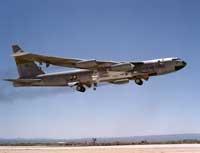
The X-43A has a surfboard shape. To fly uses Scramjet technology, a hyonic combustion engine. Scramjet technology, from a mechanical point of view, has a very simple design, since it has no moving parts. Conventional turbo engines use a rotary compressor, but Scramjet technology uses forward motion to compress engine air. It is an absorption motor, as it moves forward it takes atmospheric oxygen. This prevents the need to carry liquid oxygen supply tanks, so it can be lighter and cheaper than conventional supersonic aircraft. Once atmospheric oxygen is sucked, the fuel enters the engine by injection, in this case hydrogen, and the gases that expand by combustion increase the air leakage causing propulsion.
The X-43A Mach is designed to travel at more than 7 speeds, 7 times the speed of sound, almost 8,000 kilometers per hour. At present, the SR-71 is the fastest aircraft in the world with an absorption engine, as Mach travels at speeds above 3.
Failure of baptism
All of the above is but theory, demonstrated of course, but theory. In fact, all the beliefs that existed in the surroundings of the X-43A plane have gone to the fret to fly the prototype in the first test.
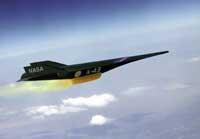
The X-43A hyonic aircraft was connected with a Pegasus propulsion rocket, which was embarked on a B-52 aircraft. With the rocket and prototype X-43A under the south, the B-52 departed from a California airport. When it reached 30,000 kilometers in height over the Pacific, the B-52 released the Pegasus propulsion rocket. From there, according to the plans of the technicians, the Pegasus rocket had to raise and release the prototype X 43A. Once released, the prototype had to fly ten seconds and flow into the Pacific. However, the surprise occurred that, after its release, the Pegasus rocket suddenly manufactured the product along with the prototype X-43A. Therefore, in the first.
However, the project cannot be completed. In fact, the failed flight was the first of the flights organized within the Hyper X program. This flight program, which has a budget of 185 million dollars, required three flight tests. Although the project cannot be finalized, it is currently standing, as they still have to decide what to do with the other two prototypes of the X-43A.
The future of the supersonic plane?
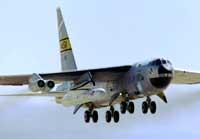
The question seems difficult to answer, but the answer is simple: yes. And who can think that a single accident in the aviation sector will paralyze the field of research that currently moves the heap of money? Many of these machines have already occurred in the aviation of history and, in most cases, it has been a breath to move forward again. Perhaps due to the Hindenbourg accident, the area of the guided balloons has been immobile, but at present a great effort is also being made. Also note that this time the X-43 did not have a driver. Therefore, the research line will remain open.
It seems that the current planes have reached the border, they cannot be more comfortable and faster. That is why, among other things, those engaged in aviation believe that the future of supersonic aircraft will be promising. What else can be asked of current aircraft if there is no more speed and more security?
Aeronautical companies are working intensively on the research of spectacular speed technologies, but they have found too high economic investments, perhaps excessive for private enterprise. In the first car of this line of research are Europe and the United States. No one wants to lose the train. In fact, the first to get good results, in addition to high-level technology, can access the passenger aircraft market.
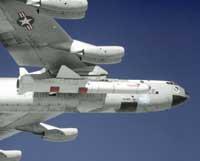
The future will be the supersonic plane. However, the road is not easy. These aircraft must be fast, efficient, safe and, above all, environmentally safe. It is believed that current technology is capable of performing such aircraft. It is also necessary to review who works: American Boeing, McDonnel Douglas and Lockhed Martin with NASA, and European Rolls-Royce, Aerospatiale, Daimler benz, Aerospace, British Aerospace and Snecma with the European Supersonic Research Program of the European Union.
It is not yet clear whether there will be enough money to fund such projects, but everything points to the future of passenger planes being a supersonic surname. If we move on that path, we also have to start thinking about a supersonic future. As seen with the prototype X 43A, some are already working, but the truth is that the first step has not yet been taken correctly. But it's not science fiction, it's a matter of time.
Published in 7K

Gai honi buruzko eduki gehiago
Elhuyarrek garatutako teknologia




